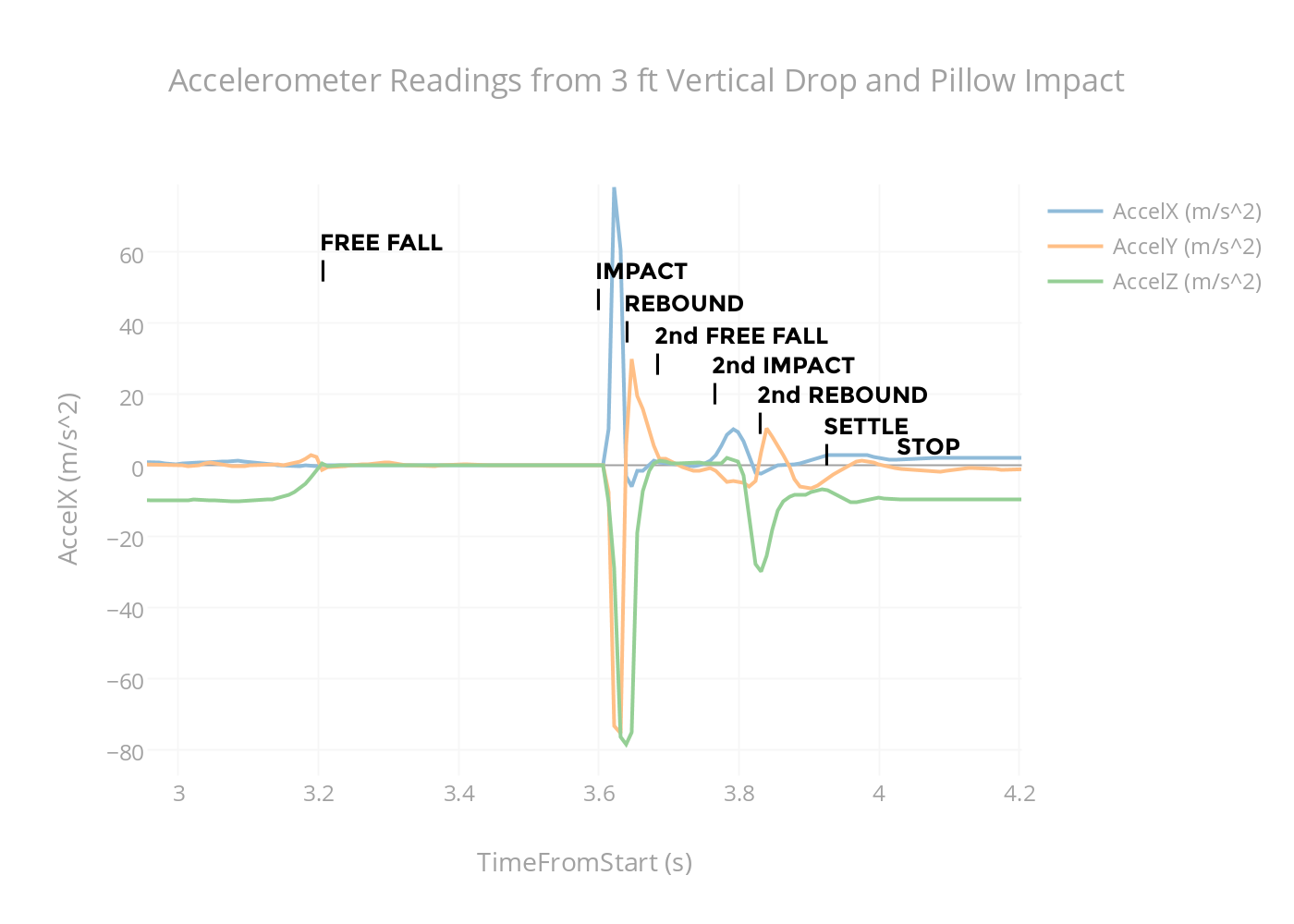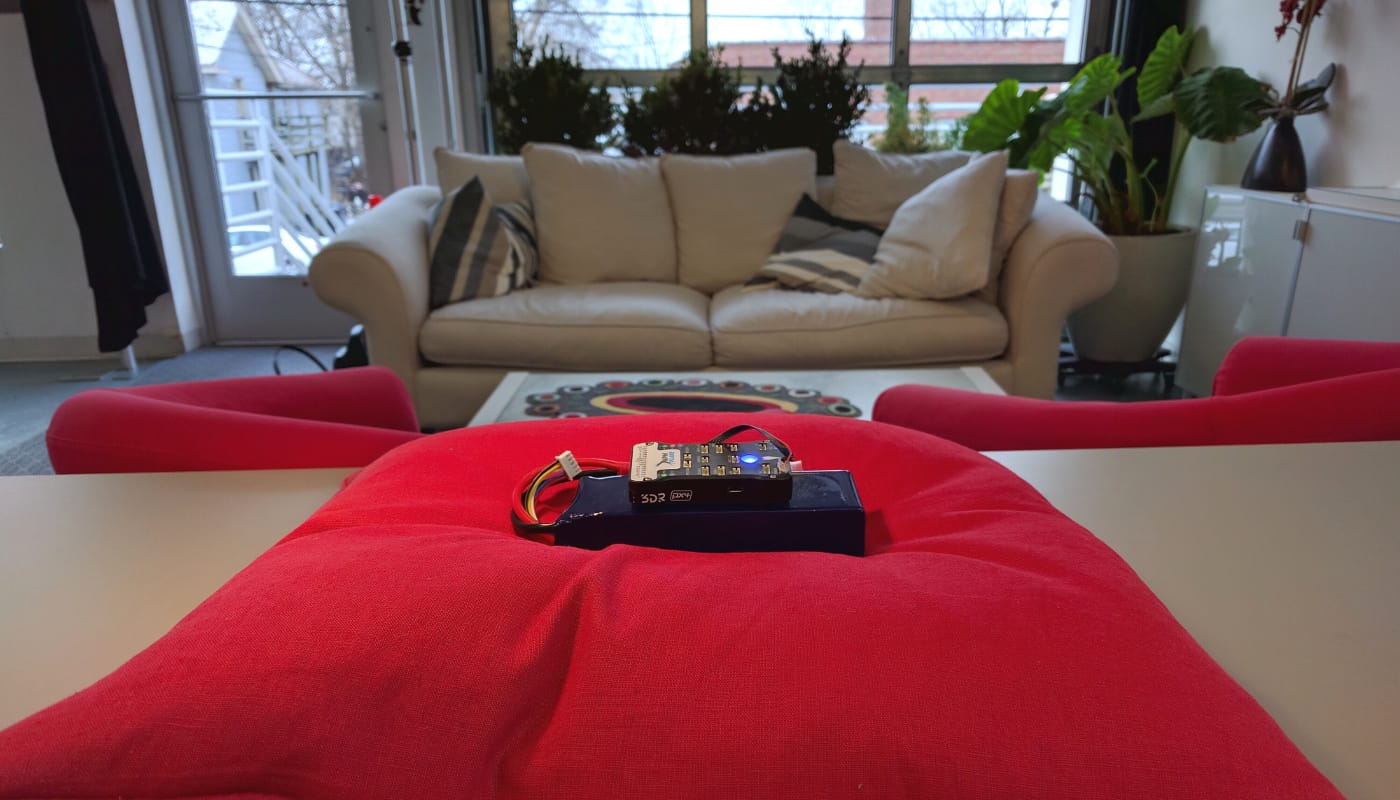Easily process IMU data from your browser using imuengine.io
A Tale of Two Unknowns
Sensors are used to measure information that are not readily available or known. So after picking a new sensor for this task, you now have two unknowns:
- an unfamiliar sensor
- for measuring an unknown property
To simplify the task of making sense of both the sensor and the property of interest, it is a good idea to first sense something known:
- something which can be verified through another sensor or device
- something with a known or expected outcome
I've been working on introductory guides for a series of sensors, starting with accelerometers. As part of the effort I've been logging snippets of data from simple tasks. Tasks like an accelerometer:
- static, laying flat
- pushed forward on horizontal surface
- vertical drop
- thrown forward
- walking
where one could reason or predict what the expected sensor signal would look like. But sometimes even simple tasks can be surprising! Hence, the title of this post.
Accelerometer Impact
Here is a fun example: the impact of an accelerometer after a 3 ft vertical drop. Let's take a look:
where the +z is pointing down and +x, +y are to the right, and towards the viewer, respectively. The resulting accelerometer time history:
First let's explain the easy stuff:
- Free Fall: after the drop begins, the accelerometer reaches free fall near 3.2 seconds, hence the clean
(0, 0, 0)reading. No more hand shaking jitter. - Impact: there is a spike in accelerometer readings upon striking the surface
- Bounce and 2nd Impact: after the large first spike, there is a secondary spike caused by a second impact after a momentary bounce.
But there is much more richness in the signal! Look at the spikes caused by the first impact. This was a vertical drop, so why are there horizontal x and y components?
Closer Look at Impact
Let's take a closer look at the impact through a reduced-speed video of a similar drop:
Now I'll try to explain this rich signal:

Notice that throughout the impact (i.e. between IMPACT and REBOUND) there are significant horizontal x and y accelerations. This can be explained by the downward force on the pillow fabric causing the sideways forces that jostle the accelerometer horizontally. This effect largely disappears during the REBOUND. Sensors can pick up on some interesting things!
Have another explanation? Let me know with the comments below!
Acknowledgements: Thank you Demoz Gebre-Egziabher for quickly pointing out the odd horizontal accelerations in the vertical drop and Joshua Friell for sharing relevant experience with accelerometers used in surface hardness testing.

